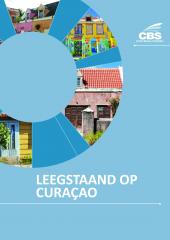Leegstaand op Curaçao 2017

This is the report of findings of the housing-vacancy survey conducted by the CBS. A housing field survey was carried out for this study, to assess the available housing stock and, more so, the current housing vacancy. The survey was carried out using the GIS technique. This was the first time the CBS carried out a survey from start to finish using this instrument. (GIS was applied in all phases of the survey: design, execution in the field, progress monitoring, analysis of collected vacancy data and presentation of the survey results.)
As part of the study, data from the 2017 housing survey was compared to the 2011 Census data. The following are the main findings based on this comparison:
- In the past 16 years (from 2001 to 2017), the housing stock grew from 49,045 to 75,087 homes;
- This increase was driven by population growth and supported by government action (the establishment of Public Private Partnerships, within the context of the policy to stimulate housing production);
- From 2004 to 2006, the housing stock grew rapidly, followed by a period lasting until 2015 during which hosing production stabilized; It is during this stabilization period that a decline in housing vacancy began;
- From 2011 to 2017, vacancy decreased from 5059 to 3190 homes; a decline of 1869 homes (36.9%);The decline in vacancies was strongest in the high-vacancy neighborhood category and in the middle-class home value category;
A more detailed specification combining the neighborhood and home-value categories shows the vacancy decline to have happened mainly among middle-class homes in high-vacancy neighborhoods and among low-value homes in mid-high vacancy
